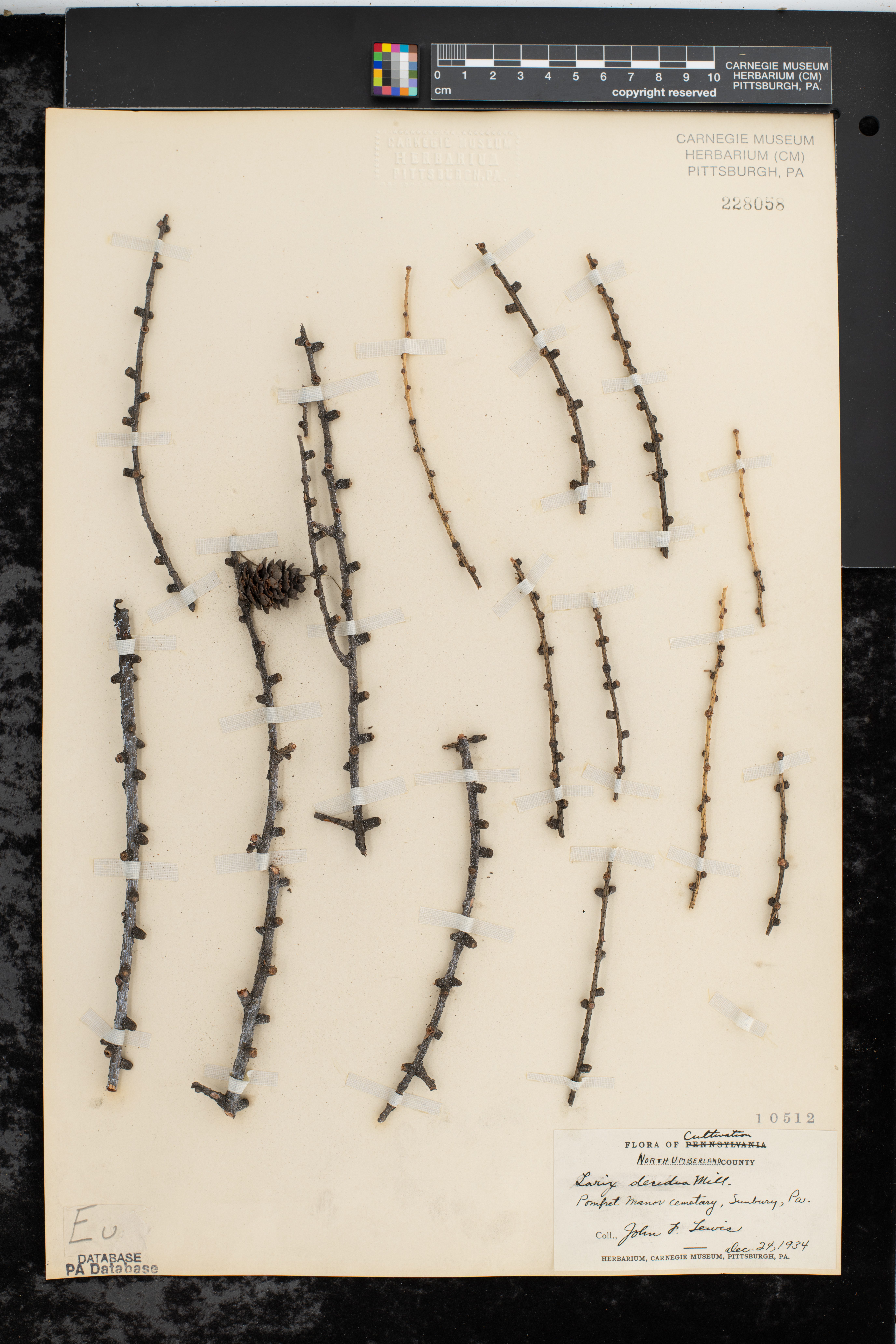Has your Charlie Brown tree lost its needles yet?

Not all needled-leaved trees are evergreen! Yes, there are deciduous species in the Pine family (Pinaceae). That is, unlike most needle-leaved trees that retain their leaves all year long (evergreen), there are several conifer species that shed their leaves each year for the winter. Perhaps most famous are a group of species called larches.
No, this needle-free specimen of twigs and a cone wasn’t collected by Charlie Brown on Christmas Eve. Rather, this humble yet festive specimen of European larch (Larix decidua) was collected by J.F. Lewis on December 24, 1934. Native to the mountains of central Europe, this species was planted in a cemetery in Northumberland county (central Pennsylvania). It is highly likely the tree is still there – many decades later – as European larches can live for many hundreds of years (perhaps even a thousand years!).
The herbarium at California University of Pennsylvania is named for the person who collected this specimen – John Franklin Lewis.
European larch recently made the big time news too, featured in a new study published in the scientific journal Science. The researchers used leaf out and leaf fall data collected from across Europe since the late 1940s for four tree species (including European larch). Surprisingly they found that trees may drop their leaves much earlier than expected with ongoing climate change. In other words, as spring temperatures warm, deciduous trees produce leaves earlier in the spring, but this also causes trees to drop their leaves earlier in the fall. This means that climate change may not result in longer growing seasons, as has been previously predicted. You can read more about this study here.
Find this Charlie Brown larch specimen (and more) here.
Check back for more! Botanists at the Carnegie Museum of Natural History share digital specimens from the herbarium on dates they were collected. They are in the midst of a three-year project to digitize nearly 190,000 plant specimens collected in the region, making images and other data publicly available online. This effort is part of the Mid-Atlantic Megalopolis Project (mamdigitization.org), a network of thirteen herbaria spanning the densely populated urban corridor from Washington, D.C. to New York City to achieve a greater understanding of our urban areas, including the unique industrial and environmental history of the greater Pittsburgh region. This project is made possible by the National Science Foundation under grant no. 1801022.
Mason Heberling is Assistant Curator of Botany at Carnegie Museum of Natural History. Museum employees are encouraged to blog about their unique experiences and knowledge gained from working at the museum.
RELATED CONTENT
Collected on This Day in 1884: Beech Drops
